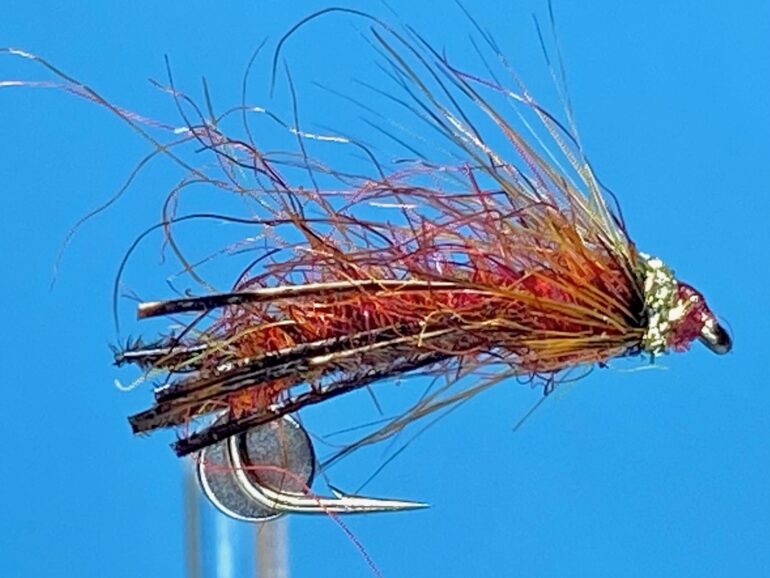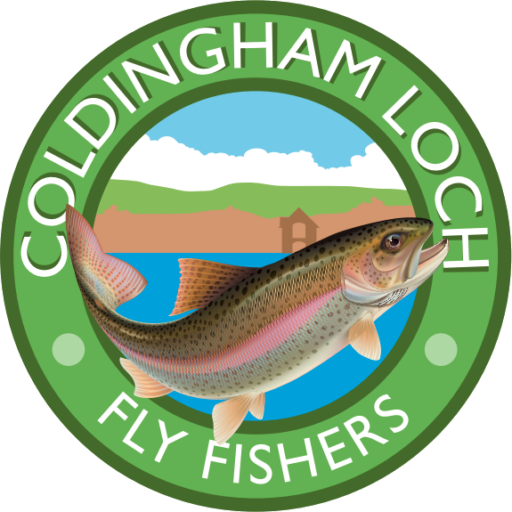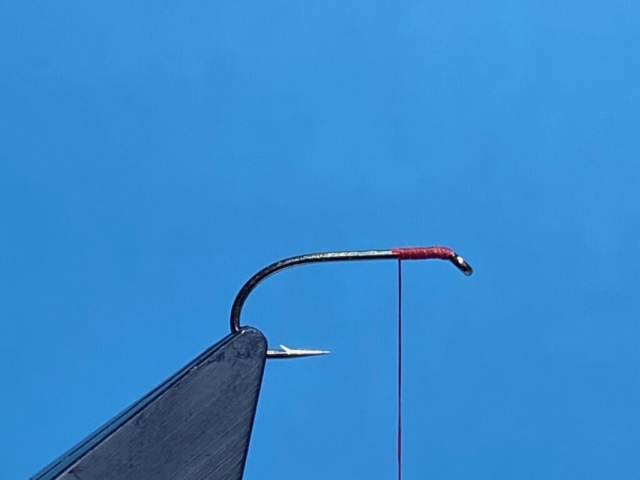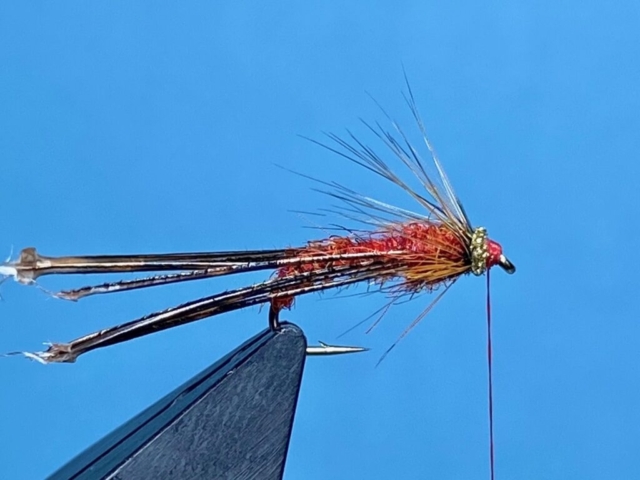
A Fly to Tie & Try June by Les Lockey
The Midas Dry Fly – (P. Davison)
Hook: Kamasan B170, sizes 10 or 12.
Thread: UNI 8/0, red.
Rib: 4lb. Clear Monofilament / Nylon.
Abdomen: Equal amounts of red, orange, & fiery brown seal’s fur with a pinch of claret mixed in.
Legs: Hen Pheasant centre tail fibres, 4 on each side of body.
Thorax: Seal’s fur, as for abdomen.
Hackle: Greenwell’s Cock Hackle.
Head: 2 Strands of gold Lite Brite, dubbed.
Photo 1. With the hook secured in the vice, start the thread at the eye and lay down a short bed of thread and remove the waste thread.
Photo 2. Crimp the end of a piece of 4lb monofilament nylon and using well waxed thread, tie it in securely. Continue to tightly bind down the nylon with the thread to halfway round the hook bend.
Photo 3. Generously dub the seal’s fur mix onto the thread and wind it on to form a chunky but tight abdomen.
Photo 4. Now wind the monofilament in the opposite spiral up the abdomen as a rib and tie it down at the thorax. Continue to bind down the nylon to just before the eye, then remove the excess nylon and return the thread to the abdomen.
Photo 5. Tie in 4 hen pheasant tail fibres on each side of the abdomen in reverse, ie. with the butt ends pointing slightly downwards and the tips over the eye. Secure in position with a few more thread turns and remove the waste tips. Return the thread to the thorax.
Photo 6. Dub more of the seal’s fur mix onto the thread and wind on a chunky thorax.
Photo 7. Remove the soft fibres from the base of the hackle feather and trim the stalk to about 2mm. in length. Using well waxed thread, tie in the hackle by the small stalk, and winding towards the eye, make 3 or 4 turns of hackle. Secure with thread and remove the waste hackle.
Photo 8. Dub the Lite Brite onto the thread and wind it on at the base of the hackle, forcing the hackle fibres back in the process.
Photo 9. Form a neat head, add some varnish to the thread and whip finish through it then remove the thread. Trim the pheasant tail leg fibres equally to just past the hook bend.
Photo 10. To complete the fly, take a piece of Velcro and rub the top of the fly vigorously to bring out the seal’s fur fibres.
Tying tips
- This is a straightforward, if somewhat unusual fly to tie. In order to obtain its fuzzy, rough appearance, the seal’s fur dubbing needs to be applied tightly, and in sufficient quantity, to allow the fur to be aggressively raked out with Velcro. As a guide, the same quantity of dubbing used for the abdomen, should be used for the thorax.
- Nylon monofilament is used as a more durable rib, capable of withstanding vigorous brushing, but it is very slippy, so it is important to crimp the end of the nylon and use well waxed thread to ensure it is securely anchored to the hook.
- I mix the various colours of seal’s fur in a coffee grinder aiming to achieve a brownish brick red colour.
- The legs on this fly are rather unusual in that they are simply straight hen pheasant tail fibres, tied with the thick ends facing rearward and pointing slightly down, which again is to help withstand the Velcro brushing, but don’t worry if the legs become misaligned. That is all part of the pattern.
- When dubbing the Lite Brite head, less is more. Two stands of Lite Brite is ample. Start winding the dubbed Lite Brite over the base of the hackle and work towards the eye, stroking back any forward facing fibres as you go.
- In order to maximize the fly’s buoyancy, liberally brush Mucilin Silicone Dry Fly liquid onto the fly and allow it to dry overnight before transferring to your fly box.
Fishing notes
- This unusual dry fly relies on its fuzzy outline to attract the attention of the trout, and to remain buoyant. It has proved its worth on large reservoirs and small stillwaters alike and is generally considered to be a caddis imitation, although I am not so sure about that as it has worked best for me when lots of terrestrial insects are on the water and caddis flies are nowhere to be seen.
- I use this pattern when I’m not sure what is on the trout’s menu, and it is always a surprise to me when this tangled mass of fibres is taken. I often fish the pattern on the point with a top hat buzzer on the dropper, but there have been times when a single Midas cast to rising fish has outscored every other dry fly I tried.













Recent Comments